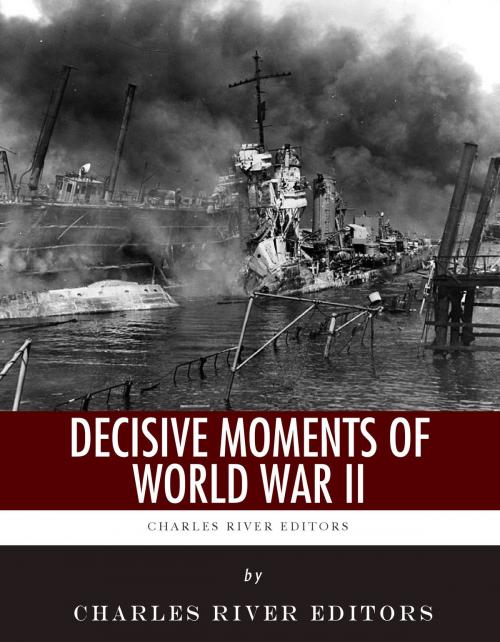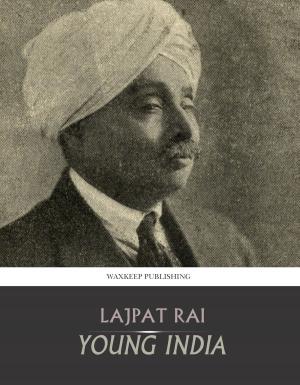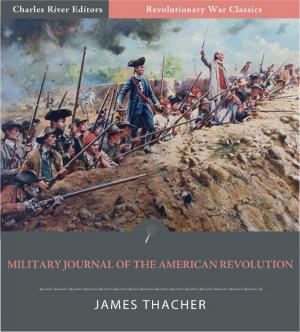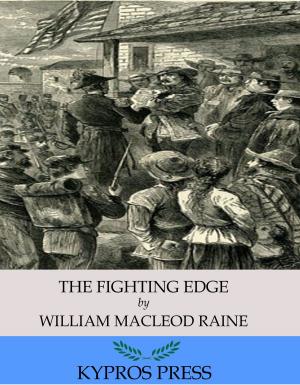Decisive Moments of World War II: The Battle of Britain, Pearl Harbor, D-Day and the Manhattan Project
Nonfiction, History, Civilization, European General, Military, World War II| Author: | Charles River Editors | ISBN: | 9781475321210 |
| Publisher: | Charles River Editors | Publication: | January 15, 2013 |
| Imprint: | Language: | English |
| Author: | Charles River Editors |
| ISBN: | 9781475321210 |
| Publisher: | Charles River Editors |
| Publication: | January 15, 2013 |
| Imprint: | |
| Language: | English |
*Comprehensively covers 4 key turning points in World War II.*Includes pictures of important people, places, and events. *Includes an original introduction for each decisive moment.*Includes bibliographies for further reading. *Explains what went right and what went wrong for the combatants at Pearl Harbor, D-Day and the Battle of Britain. *Includes a Table of Contents. During World War II, the free world literally hung in the balance, with the Axis and Allies engaging in warfare on an unprecedented scale. Though the ultimate result is now known, in 1940 it looked very much like the Axis might win the war and usher in a new world order. It took several important decisive moments to help turn the war. The Battle of Britain, fought throughout the summer and early autumn of 1940, was unquestionably epic in scope. The largest air campaign in history at the time, the vaunted Nazi Luftwaffe sought to smash the RAF as a prelude to German invasion, leaving the British public and its pilots engaged in what they believed was a desperate fight for national survival. Thats what it looked like to the rest of the world too, as free men everywhere held their breaths. Could these pilots, many not yet old enough to shave, avoid the fate of Poland and France? The fate of the free world, at least as Europe knew it, hung in the balance over the skies of Britain during those tense months. All Americans are familiar with the day that will live in infamy. At 9:30 a.m. on Sunday, December 7, 1941, Pearl Harbor, the advanced base of the United States Navys Pacific Fleet, was ablaze. It had been smashed by aircraft launched by the carriers of the Imperial Japanese Navy. All eight battleships had been sunk or badly damaged, 350 aircraft had been knocked out, and over 2,000 Americans lay dead. Pearl Harbor was unquestionably one of the seminal events in American history, and given the nature of the surprise attack, the entry of the U.S. into the war, and the lingering controversies and conspiracy theories, the attack on Pearl Harbor continues to be a highly charged and heavily debated event.On June 6, 1944, a date that will forever be known as D-Day, the Allies commenced the liberation of Europe by staging the largest and most complex amphibious invasion in human history. The complex operation would require tightly coordinated naval and air bombardment, paratroopers, and even inflatable tanks that would be able to fire on fortifications from the coastline, all while landing over 150,000 men across nearly 70 miles of French beaches. Given the incredibly complex plan, its no surprise that General Eisenhower had already written a letter apologizing for the failure of the invasion, which he carried in his coat pocket throughout the day. While the War raged in Europe and the Pacific, a dream team of Nobel Laureates was working on a project so secretive that vice president Harry Truman didnt know of it when he took the presidency after FDRs death. This secretive project, The Manhattan Project, would ultimately yield the Little Boy and Fat Man bombs that released more than 100 Terajoules of energy at Hiroshima and Nagaski; changing the course of the War and the course of civilization. Decisive Moments of World War II covers the strategic situation and the logistics that went into the planning for the Battle of Britain, Pearl Harbor and D-Day, as well as examining the course and collaboration of the Allies on the Manhattan Project. Along with pictures of important people, places, and events, you will learn about these key turning points like you never have before.
*Comprehensively covers 4 key turning points in World War II.*Includes pictures of important people, places, and events. *Includes an original introduction for each decisive moment.*Includes bibliographies for further reading. *Explains what went right and what went wrong for the combatants at Pearl Harbor, D-Day and the Battle of Britain. *Includes a Table of Contents. During World War II, the free world literally hung in the balance, with the Axis and Allies engaging in warfare on an unprecedented scale. Though the ultimate result is now known, in 1940 it looked very much like the Axis might win the war and usher in a new world order. It took several important decisive moments to help turn the war. The Battle of Britain, fought throughout the summer and early autumn of 1940, was unquestionably epic in scope. The largest air campaign in history at the time, the vaunted Nazi Luftwaffe sought to smash the RAF as a prelude to German invasion, leaving the British public and its pilots engaged in what they believed was a desperate fight for national survival. Thats what it looked like to the rest of the world too, as free men everywhere held their breaths. Could these pilots, many not yet old enough to shave, avoid the fate of Poland and France? The fate of the free world, at least as Europe knew it, hung in the balance over the skies of Britain during those tense months. All Americans are familiar with the day that will live in infamy. At 9:30 a.m. on Sunday, December 7, 1941, Pearl Harbor, the advanced base of the United States Navys Pacific Fleet, was ablaze. It had been smashed by aircraft launched by the carriers of the Imperial Japanese Navy. All eight battleships had been sunk or badly damaged, 350 aircraft had been knocked out, and over 2,000 Americans lay dead. Pearl Harbor was unquestionably one of the seminal events in American history, and given the nature of the surprise attack, the entry of the U.S. into the war, and the lingering controversies and conspiracy theories, the attack on Pearl Harbor continues to be a highly charged and heavily debated event.On June 6, 1944, a date that will forever be known as D-Day, the Allies commenced the liberation of Europe by staging the largest and most complex amphibious invasion in human history. The complex operation would require tightly coordinated naval and air bombardment, paratroopers, and even inflatable tanks that would be able to fire on fortifications from the coastline, all while landing over 150,000 men across nearly 70 miles of French beaches. Given the incredibly complex plan, its no surprise that General Eisenhower had already written a letter apologizing for the failure of the invasion, which he carried in his coat pocket throughout the day. While the War raged in Europe and the Pacific, a dream team of Nobel Laureates was working on a project so secretive that vice president Harry Truman didnt know of it when he took the presidency after FDRs death. This secretive project, The Manhattan Project, would ultimately yield the Little Boy and Fat Man bombs that released more than 100 Terajoules of energy at Hiroshima and Nagaski; changing the course of the War and the course of civilization. Decisive Moments of World War II covers the strategic situation and the logistics that went into the planning for the Battle of Britain, Pearl Harbor and D-Day, as well as examining the course and collaboration of the Allies on the Manhattan Project. Along with pictures of important people, places, and events, you will learn about these key turning points like you never have before.















